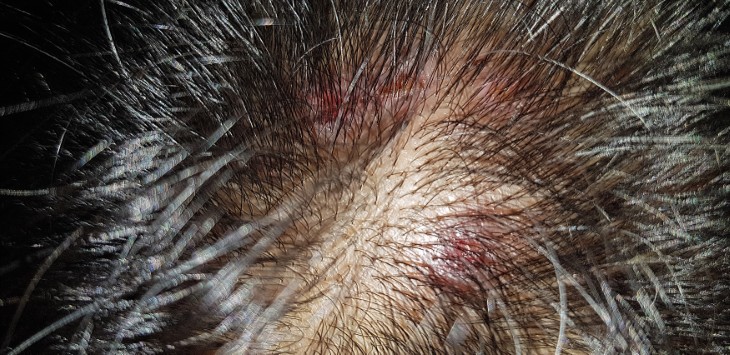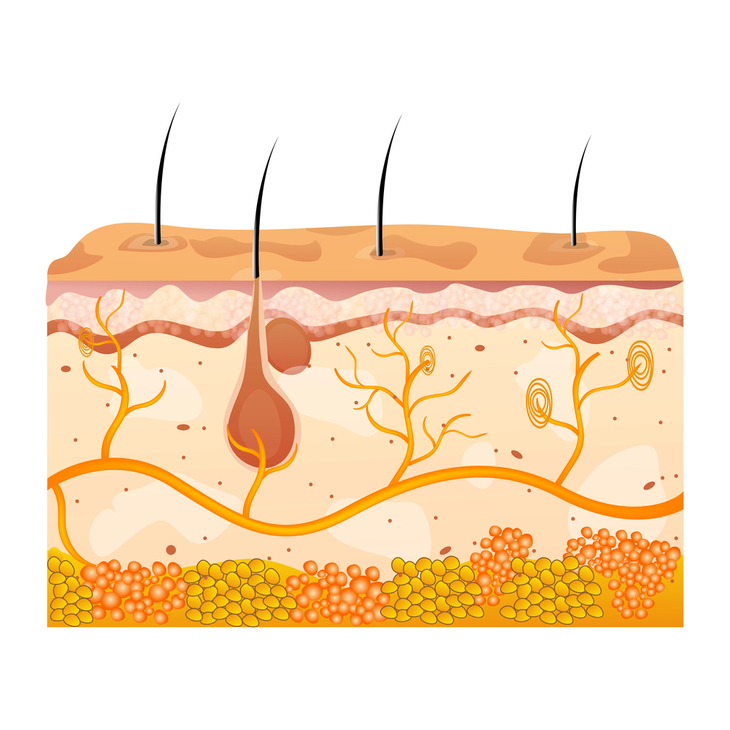According to the Mayo Clinic,
ringworm can be spread human to human, animal to human (cats are a
common source) and object (like clothing, towels, bedding, combs and
brushes) to human. Ringworm can also be transferred by indirect contact
through a swimming pool or hot tub.
The treatment: Anti-fungal medication taken daily for 4 to 6 weeks
usually eliminates ringworm. Ringworm is no longer contagious 48 hours
after starting treatment. Until then, you want to avoid contact with
others, as tinea capitis can spread through contact with other areas of
the body and other people.

This rash is a reaction to the scalp coming
into direct contact with an allergen that results in a response from
the immune system — sometimes days after the contact, so it can be
difficult to determine what the body is reacting to. ACD can be painful,
itchy and even oozing in some cases. The symptoms of a severe case can
often be mistaken for infection.
What it looks like:
Itchy redness. On darker skin tones, it may look pink, grayish or
purple.
The causes:
1. Paraphenylenediamine (PPD) is a chemical that is widely
used as a permanent hair dye and it can wreak havoc on the skin and is
one of the most common causes of scalp allergic contact dermatitis.
2. The chemicals/fragrances in shampoos and conditioners are also a
common cause of ACD.
3. Other relevant possible allergens include propylene glycol,
Cocamidopropyl betaine, methylisothiazolinone (MI) or a combined
formulation of methylchloroisothiazolinone and MI.
The treatments:
1. Identifying the trigger and eliminating it. As
stated, that can be difficult to determine; sometimes a patch test is
needed to figure out what the body is allergic to.
2. Topical steroid gel, foam, cream or ointment: Two to three weeks of
treatment should help decrease inflammation and clear up your skin.
3. Systemic steroids may be prescribed in severe cases – consult your
doctor.
In Conclusion…
Understanding the various conditions that can affect your scalp is an
important step toward maintaining both scalp and hair health. From
common issues like dandruff and folliculitis to more complex conditions
such as psoriasis and lichen planus, each scalp condition has distinct
characteristics, causes, and treatment options. The key to effective
management lies in proper identification and timely intervention.
While some scalp conditions can be treated with over-the-counter
products and lifestyle modifications, others require professional
medical attention and prescription treatments. If you’re experiencing
persistent itching, unusual bumps, significant flaking, hair loss, or
any other concerning symptoms, don’t hesitate to consult a
board-certified dermatologist. Early diagnosis and treatment can prevent
complications and often lead to better outcomes.
Remember that a healthy scalp is the foundation for healthy hair growth.
Simple practices like maintaining good hygiene, avoiding harsh
chemicals when possible, managing stress levels, and being mindful of
potential allergens in your hair care products can go a long way in
preventing many scalp issues. Additionally, if you notice any changes in
your scalp health or if symptoms persist despite treatment, seeking
professional evaluation is always the wisest course of action.
Your scalp deserves the same attention and care as the rest of your
skin. By staying informed about these common conditions and their
treatments, you’re better equipped to recognize problems early and take
appropriate action. Whether dealing with a minor irritation or a more
serious condition, proper care and medical guidance can help restore
your scalp to optimal health.








